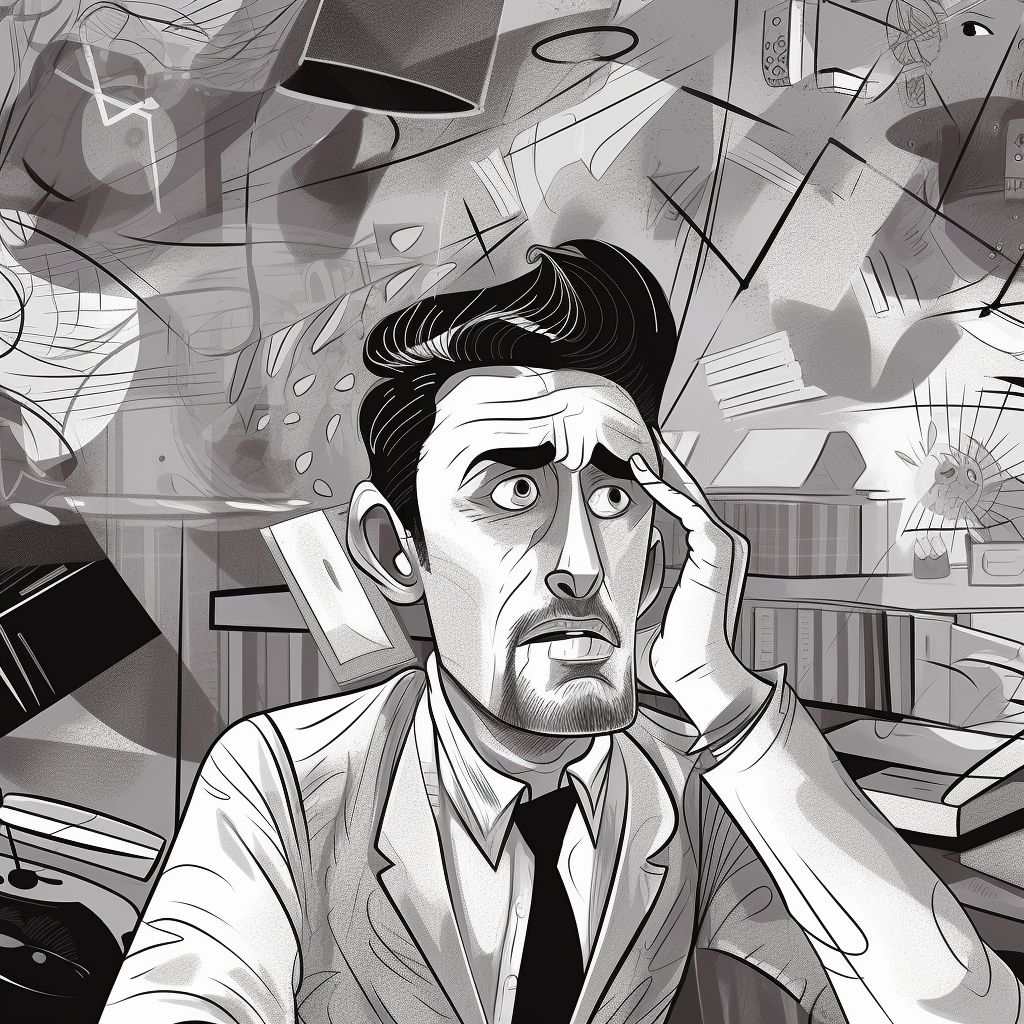Quiet BPD vs. CPTSD: Effective Understanding & Treatment

Both “Quiet Borderline Personality Disorder (BPD)” and “Complex Post-Traumatic Stress Disorder (CPTSD)” are disorders that can have a profound impact on the lives of those affected and their loved ones. They frequently go unnoticed or misdiagnosed due to their subtle and overlapping symptoms, making them particularly challenging to identify and manage.
This article aims to shed light on the distinctive features of Quiet BPD vs CPTSD, exploring their diagnostic criteria, symptoms, causes, and treatment approaches.
Quiet BPD vs CPTSD: Definition and Symptoms
Quiet Borderline Personality Disorder, often referred to as “Quiet BPD,” is a subtype of Borderline Personality Disorder (BPD). It shares many features with classic BPD but is characterized by a more inward expression of symptoms. People with Quiet BPD tend to internalize their emotional turmoil, making their condition less outwardly noticeable compared to classic BPD.
Key characteristics and symptoms of Quiet BPD are:
- Emotional instability: Individuals with Quiet BPD experience intense and rapidly shifting emotions, often triggered by seemingly minor events. These emotional fluctuations can be overwhelming and challenging to manage.
- Fear of abandonment: A profound fear of being abandoned or rejected by loved ones is a hallmark of Quiet BPD. This fear can lead to clinginess, efforts to avoid abandonment, and tumultuous relationships.
- Self-image issues: Individuals with Quiet BPD often struggle with a distorted self-image, self-esteem problems, and a persistent feeling of emptiness. They may have a vague or unstable sense of identity.
- Impulsive behaviors: While these behaviors may be less overt in Quiet BPD compared to classic BPD, there can still be impulsive actions such as substance abuse, reckless driving, or self-harm as a way to cope with emotional distress.
Complex Post-Traumatic Stress Disorder (CPTSD) is a mental health condition that arises from prolonged exposure to trauma, particularly interpersonal and relational trauma. It is considered an extension of Post-Traumatic Stress Disorder (PTSD) but with additional symptoms related to self-identity, emotional regulation, and interpersonal difficulties. CPTSD often results from repeated or chronic trauma experiences.
Key Characteristics and Symptoms of CPTSD are:
- Emotional dysregulation: Individuals with CPTSD struggle to regulate their emotions. They may experience intense mood swings, anger, irritability, and feelings of emptiness, making it challenging to maintain stable emotional states.
- Intrusive memories and flashbacks: Similar to PTSD, CPTSD includes symptoms such as intrusive and distressing memories of the traumatic events, as well as flashbacks where individuals feel as if they are reliving the trauma.
- Avoidance and numbness: CPTSD can lead to avoidance of reminders of the trauma, including people, places, or situations that trigger distressing memories. This avoidance can result in emotional numbing and a sense of detachment from one’s surroundings.
- Altered self-perception: Individuals with CPTSD may develop a negative self-concept, experiencing feelings of shame, guilt, and worthlessness. Their self-esteem is often severely impacted, and they may struggle to maintain a stable sense of identity.
| Suggestion: Ongoing Traumatic Relationship Syndrome
Causes and Risk Factors of Quiet BPD vs CPTSD

When comparing PTSD vs quiet borderline personality disorder, it’s essential to consider their potential triggers.
The exact causes of Quiet BPD are not well understood, but they are likely to involve a combination of genetic, environmental, and psychological factors. Possible risk factors include a history of childhood trauma, disrupted attachment in early life, and a genetic predisposition to emotional dysregulation.
On the other hand, CPTSD typically results from prolonged exposure to traumatic events, such as:
- Chronic childhood abuse (physical, emotional, sexual)
- Neglect and abandonment during childhood
- Long-term captivity or hostage situations
- Repeated exposure to interpersonal violence or combat
- Human trafficking or forced labor
- Ongoing psychological abuse or coercive control in relationships
Similarities between Quiet BPD and CPTSD
While Quiet Borderline Personality Disorder (BPD) and Complex Post-Traumatic Stress Disorder (CPTSD) are distinct conditions, they share several common symptoms and features, which can lead to diagnostic challenges. These similarities include:
1. Emotional dysregulation: Both conditions involve intense and fluctuating emotions, making it difficult for individuals to manage their feelings effectively.
2. Relationship difficulties: People with Quiet BPD and CPTSD often struggle in their interpersonal relationships due to issues like fear of abandonment, trust issues, and difficulty forming and maintaining connections.
3. Self-esteem and self-image problems: Individuals with both conditions may experience negative self-perceptions, feelings of emptiness, and self-criticism.
4. Impulsive behaviors: While perhaps more prominent in BPD, impulsivity can also be present in CPTSD, leading to reckless actions as a way to cope with emotional distress.
Key Differences in Symptoms and Presentation

Understanding the differences between complex trauma and borderline personality disorder is crucial for accurate diagnosis and effective treatment planning. Despite the overlap in symptoms, there are crucial distinctions between Quiet BPD vs CPTSD that professionals use to differentiate them:
1. Trauma history: CPTSD is typically linked to chronic or prolonged trauma exposure, whereas BPD does not necessarily require a history of trauma for diagnosis.
2. Response to stressors: Individuals with Quiet BPD may react intensely and unpredictably to interpersonal stressors, while those with CPTSD may exhibit heightened arousal and reactivity primarily in response to trauma-related triggers.
3. Self-injury and self-harm: Self-harming behaviors, such as cutting, are more commonly associated with BPD, although they can occur in CPTSD as well.
4. Diagnostic criteria: BPD and CPTSD have distinct diagnostic criteria outlined in the DSM-5 and ICD-11, respectively, which mental health professionals use for accurate assessment.
Quiet BPD vs CPTSD: Treatment and Management
A. Treatment options for Quiet BPD
Individuals with Quiet Borderline Personality Disorder (BPD) can benefit from a combination of therapeutic interventions and, in some cases, medication. Treatment options include:
1. Dialectical Behavior Therapy (DBT): DBT is a specialized form of cognitive-behavioral therapy designed for individuals with BPD. It focuses on emotion regulation, interpersonal effectiveness, distress tolerance, and mindfulness skills to help individuals manage their emotions and behaviors.
2. Medication: While medication is not a primary treatment for BPD, it can be used to manage specific symptoms such as depression, anxiety, or mood instability. A mental health professional may prescribe antidepressants, mood stabilizers, or antipsychotic medications as adjunctive treatment.
3. Psychotherapy: Various forms of psychotherapy, including individual and group therapy, can be beneficial. Psychodynamic therapy, schema therapy, and mentalization-based therapy are among the approaches that may be used to address underlying emotional issues and relationship difficulties.

B. Treatment options for CPTSD
Treating Complex Post-Traumatic Stress Disorder (CPTSD) often involves a multi-modal approach aimed at addressing both the trauma and its associated symptoms:
1. Trauma-focused therapies: Therapies such as Eye Movement Desensitization and Reprocessing (EMDR), Trauma-Focused Cognitive-Behavioral Therapy (TF-CBT), and Narrative Exposure Therapy (NET) are effective in helping individuals process traumatic memories and develop coping strategies.
2. Medication: Medications such as selective serotonin reuptake inhibitors (SSRIs) or other antidepressants can be prescribed to manage symptoms of depression, anxiety, and mood dysregulation often seen in CPTSD.
3. Supportive therapies: Supportive therapies like individual counseling, group therapy, and art therapy can provide a safe and nurturing environment for individuals with CPTSD to explore their feelings, improve self-esteem, and develop healthier coping mechanisms.
Strategies for Coping

Regardless of the specific diagnosis, individuals living with Quiet BPD or CPTSD can benefit from a range of coping strategies to enhance their overall well-being:
– Mindfulness and relaxation techniques: Practicing mindfulness, deep breathing, and relaxation exercises can help manage emotional distress and reduce reactivity to triggers.
– Self-care and self-compassion: Prioritizing self-care activities, setting boundaries, and practicing self-compassion are essential for building resilience and self-esteem.
– Social support: Building a strong support network and seeking peer support or therapy groups can provide validation, understanding, and connection.
– Education and self-awareness: Learning about one’s condition and triggers can empower individuals to better manage their symptoms and make informed decisions regarding treatment.
HealWiser’s Last Piece of Advice
It is of utmost importance to emphasize that seeking professional help and support is a critical step for individuals facing the challenges of Quiet BPD and CPTSD. These conditions can be overwhelming, but effective treatments and strategies are available.
Remember, you don’t have to face these challenges alone, and there is help and hope available.
Share your experience with HealWiser and others in the comments section below this post.





